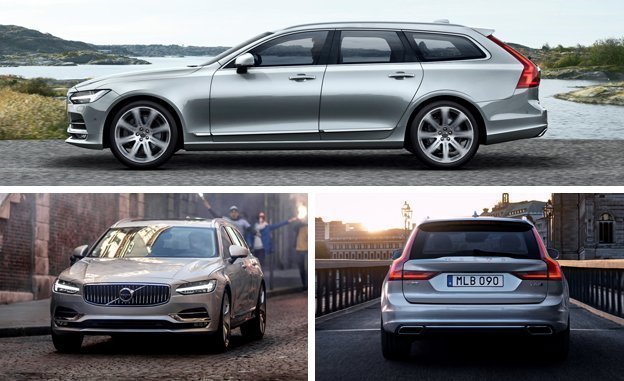Audi and BMW stopped importing the wagon versions of their mid-size sedans to America with the advent of the current-generation models. Cadillac ceased production of its wagon completely with the latest CTS. Jaguar has never offered its XF wagon in the United States, and Lexus and the other players in the luxury segment have never even built mid-size wagons. Only the Mercedes-Benz E-class continues to offer a wagon to U.S. buyers. Blame America’s unfortunate and somewhat illogical obsession with SUVs and crossovers for this near extinction.
Never Gonna Give You Up
Volvo, despite the success of its recently introduced XC90, is not ready to give up on the wagon market. That’s hardly surprising, as Volvo has been building wagons since the introduction of the Duett in 1953. Wagons have always comprised a big part of Volvo sales; in the early 1970s, the company even built the 1800ES, a wagon version of its only sports car, the P1800. In America, the wagons almost seemed to define the brand. They appealed to drivers who wanted a safe, comfortable, and practical vehicle while displaying unostentatious affluence (another concept that seems to be in terminal decline).
Volvo’s commitment to this market will be demonstrated by the introduction of the 2018 V90 at some point next year. This is the wagon version of the new S90 luxury sedan that is going on sale this July. The wagon is mechanically identical, which means the same Scalable Product Architecture (SPA) platform with a control-arm front suspension, a multilink setup in back with a transverse leaf spring, and a 115.8-inch wheelbase.
The styling and many of the body panels of the S90 also are shared, with the inevitable departures in the roof and aft of the front doors. The key dimensional differences are in length (the wagon is—surprisingly—shorter by 1.2 inches, due to less rear overhang) and height (the wagon’s extended roofline rises higher than the sedan’s by 1.3 inches). The V90’s additional glass and heavier rear structure add a modest 70 pounds or so to the curb weight, according to Volvo.
Dang, It Looks Good
While the S90 is handsome, the V90 looks even better, with the elongated greenhouse enhancing the new model’s clean sculpting. The taillights extend up into the D-pillars, in keeping with what has become Volvo tradition, and a long character line defines the car’s shoulder. The subtle, full-length roof rails have an oval contour to mate with Thule system mounts.
Inside, the V90 looks identical to the S90, at least from the back seat forward. The handsome cockpit employs upscale materials and vertical vents called Airblade, and the dash is dominated by Volvo’s innovative and intelligent portrait-oriented 9.0-inch touchscreen, which eliminates many buttons and knobs.
Under the hood, the V90 shares the S90’s powertrain. Entry-level T5 models come with front-wheel drive and a 250-hp version of Volvo’s Drive-E 2.0-liter turbocharged four-cylinder engine, which makes 258 lb-ft of torque. The T6 employs all-wheel drive and adds a supercharger in order to greatly enhance the engine’s low-rpm responsiveness while bumping output to 316 horsepower and 295 lb-ft. Both versions use an Aisin-Warner eight-speed automatic transmission that allows for full manual control.
Positive Impressions
We briefly drove the V90 in Spain, where most of the roads are even smoother than California could boast back in the days when the state still had an adequate highway maintenance budget. The V90 felt comfortable, quiet, refined, and responsive. The T6 we drove had plenty of power and the immediate responsiveness we expect from a supercharged engine. Our only dynamic criticism was the sharp increase in steering effort as you eased the wheel off-center. The hard initial steering makes the car feel heavier and less wieldy than it is. Despite the large open space in the back, there’s absolutely no boominess, and we’d rate the V90’s cabin to be as quiet as that of the S90.
The main value of the wagon, of course, is utility, and the V90 delivers, with about two cubic feet more carrying capacity behind the rear seat than the S90 has in its trunk and an additional 34 cubic feet when you fold the rear seat’s backrest. Unfortunately, no rear-facing third-row seat is offered as it has been in previous Volvo wagons. Volvo suggests the XC90 is a better machine for those who need three rows of seating, but that thinking somewhat contradicts the wagon’s role as the anti-SUV.
Despite this slight loss of purpose, we are delighted that Volvo is continuing its wagon heritage. We don’t all have to drive SUVs, you know.
Powered by WPeMatico






